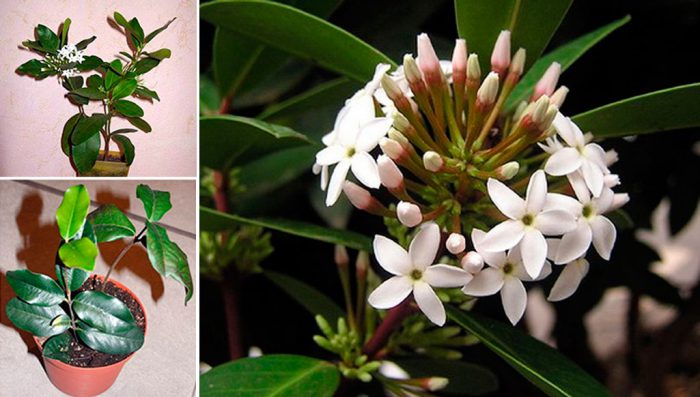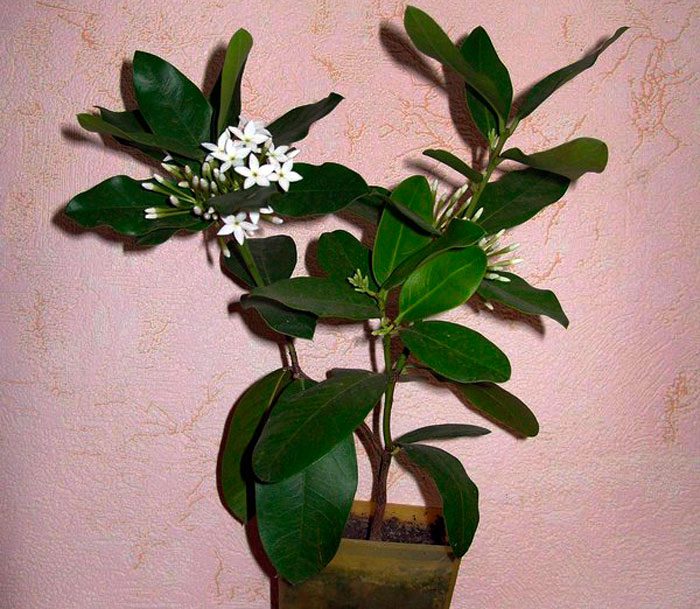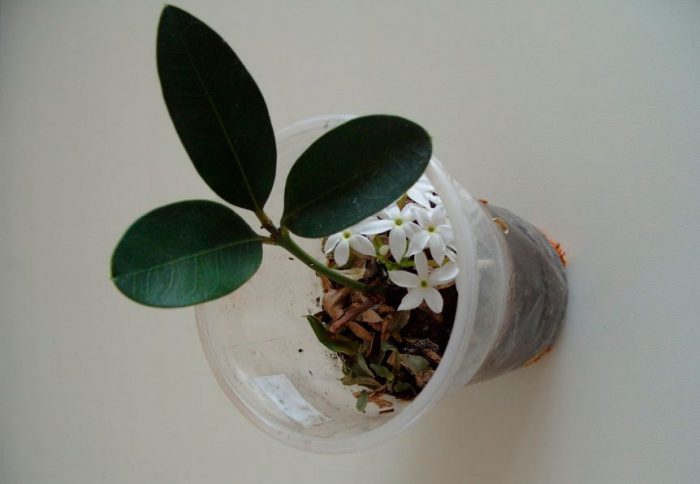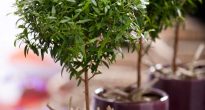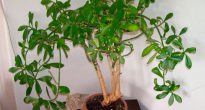Acocantera is directly related to the Kurtov family. This plant is an evergreen shrub with strong greenish-grayish shoots. Its leathery shiny leaves have a lanceolate-oblong or oval shape. The leaves in length, together with a short and thickened stalk, reach 12 centimeters, and their width is from 3 to 5 centimeters. The semi-umbrellas of the flowers are very lush and they are collected in the apical part of the shoots in ball-shaped inflorescences.
Very fragrant flowers (the smell is similar to jasmine) are snow-white in color. The resulting fruits are similar in shape to olives. Their color changes from pale pink to blue-black as they mature.
In the wild, it is found in the western regions of South Africa, and there flowering occurs in autumn and spring. When grown in a winter garden or in an apartment, flowering is observed from January to March or April.
Content
Home care for acokantera
Temperature regime
Loves warmth very much. In this regard, the temperature in the room should not be lower than 15 degrees, even in winter.
How to water
It is recommended to water it with soft settled or boiled water. During active growth, watering is carried out approximately 2 times every 7 days, after the top layer of the substrate has dried. But do not forget that overdrying the soil can lead to foliage falling.
Air humidity
Requires high humidity (about 60-70 percent). Therefore, the foliage must be regularly sprayed or put a little pebbles into the pan and pour water.
Earth mix
A suitable soil mixture consists of leaf, humus and sod land, as well as peat and sand, taken in equal proportions. Young specimens need to be replaced with leafy soil.
Top dressing
It is necessary to fertilize the acokantera during the flowering and ripening period of the fruits 2 times a month. For this, mineral and organic fertilizers are used, introducing them into the soil alternately.
Reproduction methods
It can be propagated by seeds, as well as semi-lignified apical cuttings.
The seeds are removed from the ripe fruit, washed and dried thoroughly. Sowing is carried out in a neutral loose soil, which includes leafy soil and peat. Seeds emerge, as a rule, 3-4 weeks after sowing. They need systematic spraying and ventilation. As the plants grow, they need to be transplanted into larger pots. To obtain seeds under indoor conditions, artificial pollination is necessary.
Rooting of cuttings takes a very long time and is rarely successful.The fact is that there is milky juice inside them. The upper parts of the shoots with 2-3 nodes are cut for cuttings. In the lower part, all the leaves must be torn off, and in the upper part, shortened by ½ part. Then the cutting must be lowered into a container filled with warm water. In this case, only the lower part should be immersed in the liquid. This is necessary so that most of the milky juice flows out. Then the lower part is slightly cut off, and the cutting is immersed in a solution of a substance that stimulates root growth for 24 hours. Then the prepared cuttings are planted in a substrate consisting of sphagnum and sand. For successful rooting, you will need a mini-greenhouse with bottom heating, since the temperature must constantly be kept at around 25 degrees. Until the roots appear, watering is practically not done, however, it is necessary to spray the foliage regularly. After rooting, the plants are transplanted into a pot with loose, nutrient-rich soil. At the same time, crown molding begins. First, you need to pinch the apical buds of fast-growing stems, and then remove unnecessary shoots.
Acokantera has a spectacular appearance throughout the year, and it does not matter if it has flowers or fruits on it or not. It should be remembered that any part of this plant contains poison, and therefore it is better not to grow it in a house where there are small children.

